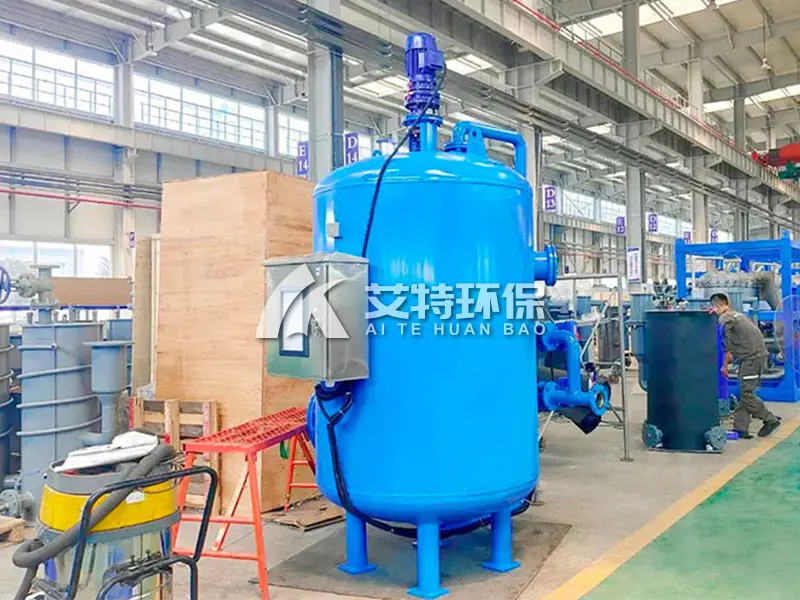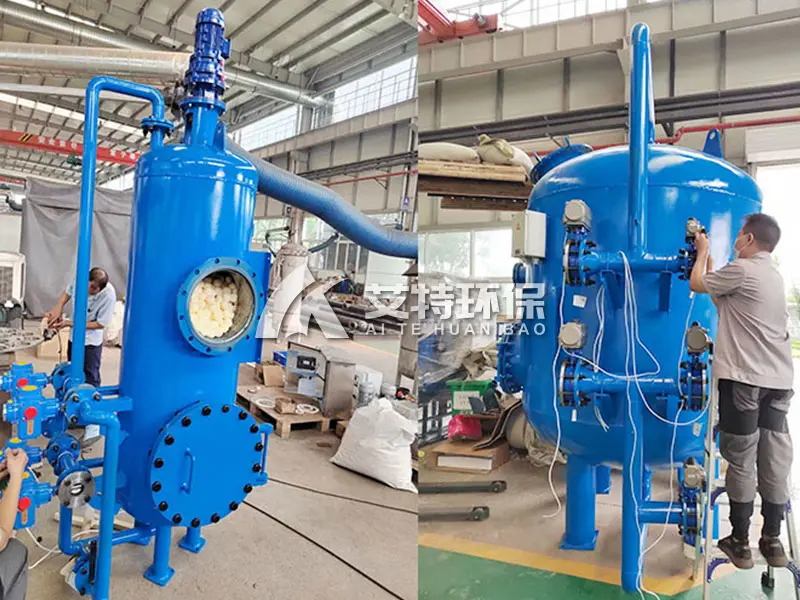The fiber ball filter takes a bunch of short fibers, and tightly ties or hot melts them in the middle, so that the short fibers form a radial spherical structure. The individual characteristic of this kind of fiber ball is that the fiber in the middle of the ball is dense, and the closer the ball edge is, the looser the fiber, and the uneven distribution of porosity.

The fiber ball filter is filled with fiber balls in the container to form a bed. Because the fiber balls are relatively loose, the fiber filaments between the fiber balls in the bed can be interspersed with each other. At this time, the individual characteristics of the fiber balls are not important. The bed forms a whole. The pressure on the fiber balls in the bed is the sum of the fluid resistance of the filtered water flow, the gravity of the fiber balls themselves, and the gravity of the retained suspended matter (if the water flow passes through the bed from top to bottom, the force in the filter layer is in sequence along the water flow direction. Increasing). Due to the elasticity of the fiber ball, the porosity of the filter layer and the filter pore size are gradually distributed from large to small under pressure, and the specific surface area of the filter material is gradually distributed from small to large.

This is an ideal filtration method with increasing filtration efficiency from low to high. The suspended solids with larger diameter and easy to filter out can be retained by the upper filter layer, while the suspended solids with small diameter and difficult to filter out can be filtered by the middle or lower layer filter layer. interception. In the entire filter layer, mechanical screening and contact flocculation are fully exerted, so as to achieve higher filtration rate, interception capacity and better effluent quality.

During the filtration process, the voids of the filter layer gradually become smaller along the direction of the water flow, which is more in line with the ideal distribution of large and small voids on the top of the filter material. It has high efficiency, fast filtration speed, large sewage interception capacity, and high removal rate of organic matter. Rinse, the amount of rinsing is 1-2% of the amount of filtered water, and it is a filler for advanced water treatment.

The field test data of fiber ball filtering sewage shows that when the operating flow rate is 25km, the sewage interception capacity is generally between 5kg, the operating flow rate and sewage interception capacity are several times that of the sand filter, and the turbidity of the effluent is significantly better than that of the sand filter. The shortcomings of the filter are: because the fiber ball is a radial sphere, the fibers near the middle of the ball are dense, and it cannot be loosened during backwashing, and the retained dirt is difficult to clean; the fiber ball is washed with air and water. It is easy to run off, and the fiber balls are easily broken when cleaned with mechanical agitation.